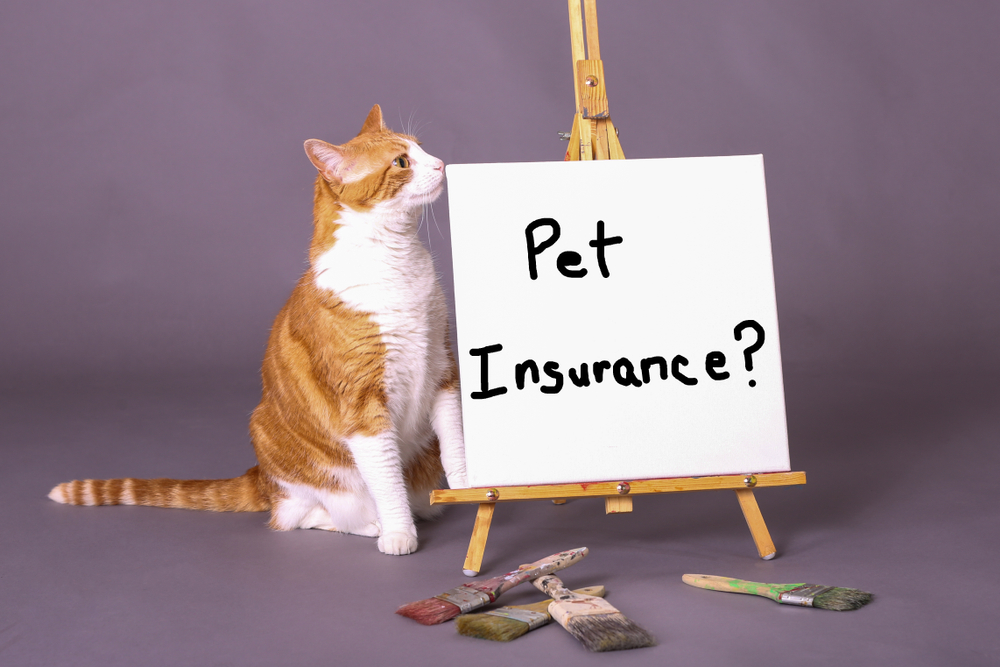Pet owners frequently ask their veterinarians about pet insurance. Some common questions include ‘What is pet insurance?’, ‘What does it cover?,’ ‘Can I use it for this appointment?’, How much does a vet visit cost anyways?’ and ‘Should I get pet insurance or start my own pet emergency fund?’
Pet insurance is a policy that you purchase to cover an unexpected illness or accident that your pet may encounter to prevent receiving a high veterinary bill. It’s similar to what you’d expect from renters or homeowners insurance.
Differences Between Human Health Insurance and Pet Insurance
As you probably know, health insurance for human medical care involves paying a monthly fee (called a “premium”), as well as paying a certain amount of your medical expenses out-of-pocket before the insurance coverage takes care of a portion of your medical bills. The amount you pay before your insurance kicks in is called the “deductible,” and then the insurance company pays a higher percentage of your medical costs—no matter how many different doctors you see, or medical conditions you have. Medical facilities negotiate the price of services with different insurance companies.
With pet insurance coverage, however, the situation is very different—and confusion abounds, because options vary so much between companies. From preventive care to illness coverage, or a routine wellness exam, every pet insurance plan is different. One thing that is universal across ALL pet insurance companies is that you pay a monthly premium—but after that, things get more complicated!
What’s Excluded From Pet Health Insurance
Before investing in pet health insurance, every pet parent should have a clear understanding of what kind of coverage is provided and if there are any exclusions listed in the plan, such as:
- Preventive care
- Dental disease
- Grooming
- Routine checkups
- Preexisting or hereditary conditions
- Behavior issues
- Hip dysplasia
Of course, every insurance plan is built different so make sure to double check when searching for the best plan for your needs.
How Does Pet Insurance Work?
If your pet needs veterinary care and your pet insurance policy covers illness and injuries, then you will usually have to pay the veterinary hospital the entire cost of services upfront, submit a claim to your insurance company, and wait to be reimbursed. Some companies have mobile apps that allow for reimbursement in as little as 24 hours, but with some, you could be waiting weeks for a check. (A few insurance companies do pay some hospitals directly, leaving the pet owner responsible only for the amount of their deductible at the time of care—but this is much less common.)
Unlike your own medical care providers, veterinary prices do NOT change based on who is being billed for the service—so the costs of your pet’s care cannot be negotiated. However, veterinary hospitals are used to helping pet owners submit the required paperwork for insurance claims and are happy to help in this process!
Deductibles are a bit more complicated when it comes to pet insurance coverage. A deductible is a portion of the veterinary bill that you, as a pet owner, are responsible for. Some companies have a deductible that “resets” every year, similar to your own health insurance policy, regardless of how many different medical conditions require veterinary care throughout the year. Other policies have a deductible per medical condition—so if your pet has a stomach issue and a skin problem, you will be responsible for the amount of your deductible for each separate problem. Make sure you understand how your chosen pet insurance company works and the conditions of your pet’s individual policy.
Finally, let’s talk about pre-existing conditions. Many pet owners whose animals have just been diagnosed with a serious illness think, “Well, I’ll just enroll Fluffy in pet insurance to get this large veterinary bill taken care of.” Unfortunately, this is not an option. Pet insurance companies almost NEVER cover pre-existing conditions, and many have a waiting period (one week, one month, or longer!) before you can use your benefits toward a pet illness. This means that by the time your dog needs emergency surgery to remove a sock from his intestines, it’s too late to enroll him in pet insurance and expect the insurance company to reimburse you for any of the costs incurred. Similarly, if your dog suffers from seasonal allergies and gets ear infections multiple times per year, pet insurance companies likely will not cover ANY of his ear infections—if he had one prior to enrolling him in a policy.
Since there are so many well-known diseases that are common in purebred dogs, pet insurance companies will often exclude these common medical conditions from being covered as well. Examples may include German Shepherd dogs and hip dysplasia, French Bulldogs and spinal issues, or Cocker Spaniels and skin issues. Make sure to read the fine print—and consider adopting a mixed-breed dog to minimize the risk that your policy won’t cover some expensive problems!
AskVet Tip: If you decide to purchase pet insurance, the BEST time to enroll your pet is while they are young and healthy—BEFORE they develop anything that may be considered a pre-existing condition.
What About Wellness Care?
Just to make the conversation about pet insurance plans even MORE confusing, there are many different levels of coverage available today! Some companies offer insurance plans that only cover illness/injury/accidents, while other companies offer these plans PLUS plans that include reimbursement for wellness care. Some will even reimburse you for portions of the cost of flea and heartworm prevention!
Typically, a healthy adult dog will cost around $500-1,500 per year in routine pet preventative care, such as vaccinations, deworming, physical exams, wellness bloodwork, and flea and heartworm prevention. Being reimbursed for some of these expenses can really help a pet owner’s budget.
It’s also important to know that some pet insurance companies will not cover the cost of treating a problem—like a broken tooth—if you have previously declined the recommended routine medical care that may have prevented the issue—like a routine dental cleaning. This is yet another reason why it’s so important to follow your veterinarian’s personalized recommendations for your pet’s healthcare.
Is Pet Insurance Right for Me?
When trying to figure out if pet insurance is right for you and your pet, there is no single answer to this question that fits every household! If you can afford the monthly premium costs, and are financially secure enough to wait for reimbursement of an unexpected veterinary bill, then pet insurance may give you tremendous peace of mind. It’s one service that everyone hopes you don’t need to use—because everyone wants your pet to stay healthy!
On the other hand, if it makes more sense for you to set upyour own pet savings account specifically for veterinary care, then pet insurance may not be right for you. This can be a great tool to augment your pet’s existing insurance coverage, or if you are wondering how to pay for vet bills!
Whether you choose to enroll your pet in an insurance policy or choose to provide for their healthcare needs from your own bank account, our AskVet veterinary professionals are here to help you make the right decisions for your pet. We are available to discuss all of your pet’s needs 24 hours a day, 7 days a week. Whether you have an immediate need or are looking to improve your pet’s overall wellbeing, just sign in to your account and one of our friendly and knowledgeable veterinary experts will attend to your needs, no appointment required!








